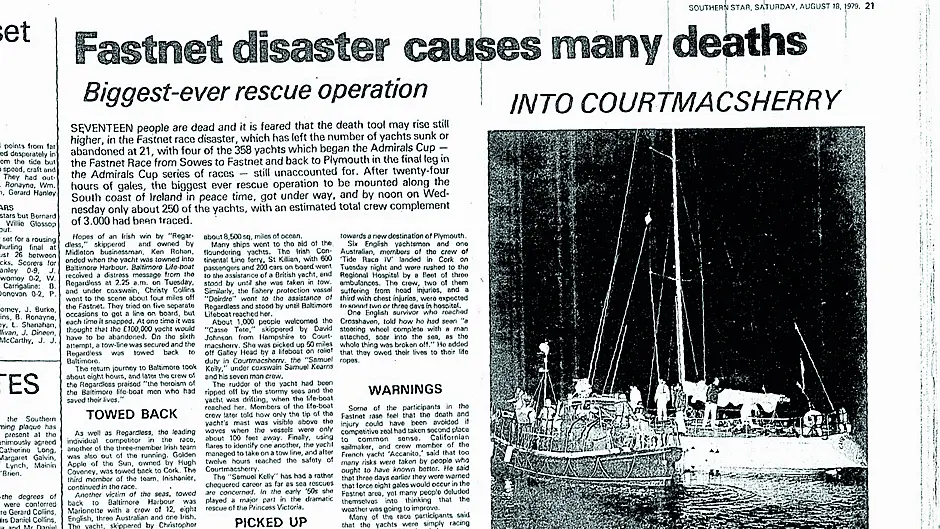THIS is the 50th edition of the Rolex Fastnet Race, and while many elements of the world-famous event have changed over the decades, one thing has remained constant: the course sees all yachts round the iconic Fastnet Rock off the West Cork Coast, after which the event is named.
The first Fastnet Race, originally called ‘The Ocean Race’, was held in 1925 and started from the Royal Victoria Yacht Club in Ryde, headed east, then headed to the Fastnet Rock, finishing in Plymouth. That race had seven starters.
The start moved to Cowes the following year, and the race went biennial in 1931. The course remained largely fixed until the fleet outgrew Plymouth and was moved to Cherbourg-en-Cotentin in France in 2021.
Nearly 500 yachts of all shapes and sizes, ranging from 9m to 32m, are taking part this year – 26% more than the previous record entry of 388 that participated in 2019.
This is more than twice that of any of the other classic international 600-mile offshore races, making it the biggest offshore yacht race in the world. At least 15 Irish or Irish-crewed entries have been confirmed to take part this year.
Entries took a hit following the 1979 disaster when a record 303 yachts participated. Almost 3,000 competitors and spectators were sailing the 605-nautical mile course from the Isle of Wight to the Fastnet lighthouse and back to Plymouth when conditions changed dramatically on the night of August 13th.
By the end of the race, 24 boats had been abandoned, five boats had sunk, 136 sailors had been rescued, and 15 sailors died. Most of the deaths took place 100 miles east of the Fastnet, but there were a lot of yachts abandoned around the Fastnet.
 A memorial to the 1979 race on Cape Clear.
A memorial to the 1979 race on Cape Clear.
In 2011, another disaster was averted, thanks to efforts of Baltimore RNLI and other rescue services. The US-registered Rambler 100 had been among the leaders in the race, but shortly after she rounded the Rock its keel was lost, causing it to capsize.
Three crew climbed straight on to the upturned hull as she went over, the rest ended up in the water, including four who had been down below at the time, some sleeping. The majority of her 21 crew managed to clamber up on top of the upturned hull, while five, including the skipper, alarmingly drifted away from the boat. Fortunately, the five tied themselves together, and they were recovered after having spent 2.5 hours in the water, while the remainder of the crew were picked up by the lifeboat from Baltimore.









